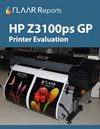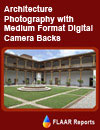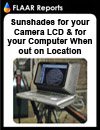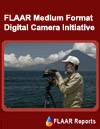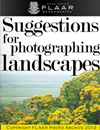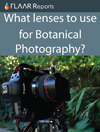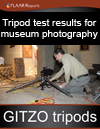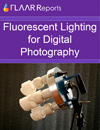Not using drone aerial photos in field work is backwards
High-resolution drone aerial cameras can significantly improve field work projects
Years ago archaeologists, botanists, zoologists used balloons to do aerial photography of their research area. I had friends provide their helicopter or airplane for photographing Maya pyramids and temples (helicopter was better because you can take the door off so you can more easily photograph at every angle).
Then in recent years more and more people are using drones. But when we began to hire drone pilots (six years ago) the drone cameras were “GoPro” style (excessively wide angle and low resolution). GoPro are great for hikers and bikers for weekend photography but not adequate for serious field research projects (seems like I was not the only person that recognized their low-end status; GoPro abandoned the drone market in 2018).
Today DJI is the #1 top respected brand name worldwide. We have been flying our DJI Mavic 2 Pro for two years in the dry cactus deserts and wet swamps and rain forests of Guatemala.
We have a 15-month fieldwork project studying the flora, fauna, and biodiverse ecosystems of the Municipio de Livingston, Izabal, Guatemala. We use a drone (plus our Canon, Sony, and Nikon digital cameras; plus our iPhone ProMax and Google Pixel pro cameras for instant landscape panoramas).
Now the forestry conservation and preservation agency of Guatemala (CONAP) has asked us to join them in a 5-year project of cooperation and coordination to document previously unstudied, undocumented, and thus unpublished bio-diverse ecosystems and the plants and animals that depend on these remote areas to survive. We are finding ecosystems that have never been visited by any professor or researcher. These are deep into rain forest areas not reachable even by 4-wheel drive vehicles (some days we hike up to 18 kilometers; 9 km in; 9 km back out to return to our base camp).
Due to the unexpected bio-diversity, we realize that it is essential to have aerial photos. But each month the vegetation changes a bit (different trees, bushes and vines flower or fruit). And some leaf colors change by month just like the Canadian maple tree. I have seen leaf colors in different months where we do field work in Guatemala that are different, and brighter, than autumn colors in New Hampshire, or the Ozark Mountains of Missouri (where I grew up).
Ecological field work is inadequate without drones
I have been exploring Mexico, Guatemala, Belize, Honduras, and El Salvador for many decades (starting in Mexico at age 16 as a backpacker in 1961). Although I have also worked for a Harvard archaeological project on the Peru coast (of Ancon) and for a Yale project high in the Andes Mountains (Huarochiri area and further into the mountains), my heart and soul are in Guatemala. I was a student intern in photography and architectural recording (of pyramid temple and acropolis architecture at the ancient Maya city of Tikal) for 12 months in 1965. So I am familiar with the ecosystems of Guatemala: half the country is karst (limestone) the other half is every stone and mineral you can imagine.
Soil color and chemistry changes every hundred kilometers. Plus even in the hilly areas there are flat savanna areas, flat tintal logwood seasonally inundated areas, but surrounded by hills. When I hike through these areas on research trips the vegetation changes every kilometer. So to document all these bio-diverse ecosystems it is essential to have a high resolution drone. 20MP camera is a good start but for serious documentation you need the 50MP Phase One Industrial iXM or the 100MP iXM camera. We do not have it (since our budget has to obtain equipment for staff and team of 33 people plus everything needed for base camp areas out in the rain forests).
But as soon as a drone camera of higher resolution than our current DJI Mavic 2 Pro or the DJO Mavic 3 Pro that we are trying to find out when it will really be available, we realize that a 100MP camera is what is needed.
Experience with different drone camera brand models helps to know which drone camera is best
In 2020 we started with a DJI Mavic Air. Photos were definitely better than not having any at all (and for sure better than GoPro style). But were not high enough resolution with 12 MP camera. So we asked all our colleagues what drone brand and drone model and camera they would recommend. One said he used the Mavic Air 2 and was very happy with it. Claims it has “48 megapixel Hasselbald camera.” But in reality has only a 12 megapixel camera multiplied digitally to claim “48.MP” I prefer true megapixels. So we kept on asking around and reading reviews. Gradually we found out that all the other people we asked recommended the DJI Mavic 2 Pro, so this is the one we got and have used for two years now.
DJI Mavic Air 3 and DJI Mavic Air 3 Pro are coming out
We are now ordering the DJI Mavic Air 3 Pro drone with a slightly larger sensor than our current DJI Mavic 2 Pro. We will test the DJI Mavic Air 3 Pro as soon as it arrives. In the meantime, the DJI Mavic 2 Pro is better than any, all, and every cheaper lower-res drone camera.
Multispectral aerial cameras for identifying plant species
When you are studying an open area such as a savanna (that is several kilometers around and a marsh in the middle) it is not realistic to hike to each and every plant to take photographs to identify each species. It is much more practical to have a multispectral aerial camera with software that allows you and your team of botanists to coordinate with the software and tell where every species of Coccoloba tree is growing, where every Passiflora vine is crawling along the top of herbs, sedges or reeds.
 |
|---|
| The thick mass of long-leaf tall herb, Thalia geniculata L. forms a literal island in the middle of this Savanna East of Nakum (Parque Nacional Yaxha, Nakum and Naranjo). We are curious why thousands of this plant grow “only” in the middle of the savanna? And what are the other totally different plants adjacent to this mass of Thalia geniculata? |
| DJI Mavic 2 Pro aerial photo by Haniel Lopez during our November 2021 exploration of the Savanna East of Nakum that we first visited during 2019. Common name for Thalia geniculata L. is alligator flag (that is the name in Florida); here in Guatemala there are two species of crocodiles and one species of caiman (but that is on the Pacific Ocean coast). Where we work are only crocodiles—no alligators. No botanist, ecologist, soil scientist or archaeologist has published photographs or description of this savanna. It did not even have a name (I named it Savanna East of Nakum). All the capable researchers studied the tintal bajo below and around this savanna. We too are interested in bajo areas (as probably agricultural areas thousands of years ago for the Maya). But we are dedicated to finding, hiking to, photographing, researching, and publishing savanna biomes and comparable open areas (sawgrass areas that locally are called a cibal (also spelled cival, sibal)). If we had a 100 megapixel Phase One iXM camera with special lenses we could photograph every plant area from above and subsequently work to identify each plant. You need the 100 megapixel RAW photograph resolution so you can see individual leave shape and the flowers (so we need to visit this area every two months to capture all the species in flower, since each species blooms in a different month). |
Our goal is to show that a 100MP drone camera can transform scientific field work
Geologists: when we drive thousands of kilometers each month through mountains, hills, valleys, flatlands you see remarkable geology (where the road has cut through the hills, so you can see all the different stones and minerals along the side of the road).
Jadeite and Nephrite area in the areas we drive through every month. Obsidian (volcanic glass) of black, gray, and black-mahogany color are at km. 25 along the highway where I have been driving for over half a century (CA-9, from Guatemala City northwest to the rest of the country). Drones are what are needed to show the diversity of minerals that were available to the local Maya and then the Teotihuacanos, Toltecs, and Aztecs who had long-distance trade with the Maya.
Salt is an even more important geological aspect; millions of Mayan people needed tons of salt (since on the coast they had to salt meat and fish so it survived transport inland to trading partners). I doubt the remarkable salt areas of Guatemala, Belize or Mexico have been photographed at 100MP quality.
Ecologists: Guatemala has cactus-filled deserts (with the venomous heloderma lizards) and cacti of every size, shape, and structure (even trees, literally a complete tree: branches, leaves, trunk, twigs, but it is a cactus). High resolution drone photos of this area would be impressive.
Guatemala has mountains so high there are no trees at this altitude (but awesome shrubs, herbs and other ground plants). Volcanoes are visible even from my office window in Guatemala City (I see three volcanoes in front of me as I write this webpage).
Both Pacific Ocean shore ecosystems and Caribbean ecosystems are available to photograph (we have over 20 years experience especially in the Monterrico and Canal de Chiquimulilla areas near the Pacific Ocean). Our current 15-month project is in the Rio Dulce-El Golfete-Amatique Bay wetlands area (inlet from the Caribbean Sea). So impressive beach areas for drone photography.
The rain forests vary incredibly in forest types, from swamp forests to seasonally inundated forests to open savannas with only a few trees. You get pine-oak forests in hills south of the “palm jungles” elsewhere in the country.
Ecologists around the world should consider using drones with higher resolution: 12MP is too wimpy; 20MP is a tad better; 50MP is significantly better; but since 100MP is available, if you want to produce better research results for your university, your project, or your conservation agency, the 100MP iXM Phase One is the best option for using on a drone.
Zoologists can study what animals are feeding on fruits, berries, and leaves of the savannas (with a drone). Zoologists can study howler monkeys and spider monkeys in the tree tops with a drone. And would be helpful to document how many crocodiles are along the Rio San Pedro (which flows out of the karst underground area of Paso Caballos, Peten). I noted about one crocodile every 100 meters on a recent field trip here. Plus high-res drone can help study crocodiles around Lake Yaxha (Parque Nacional Yaxha, Nakum and Naranjo). Most waterbirds (shore birds, wading birds) do not fly high so a drone with super high resolution can help ornithologists document how many species of migratory birds have arrived from Canada and USA to the lake shores of Guatemala.
Archaeologists need high resolution drones. However, all the focus nowadays is on LiDAR (but the needed resolution is from a hired airplane; not from your own drone). LiDAR removes all vegetation and shows how (the Olmecs, Maya, etc. modified the landscape by canals or raised fields or pyramids). But a 100MP iXM Phase One camera can show the world the ancient pyramids, temples, palaces, ballcourts, acropolises, causeways surrounded by the gorgeous local rain forest vegetation. You can show an archaeological site via a drone in a way that is best to attract tourists from around the world.
Botanists and Ethnobotanists, if they see what we record with a 100MP drone, can obtain results that their colleagues never achieved.
Botanists study plant genus, species and family. Ethnobotanists study how local indigenous people use the wild native plants of an area. FLAAR has been accomplishing research on which flowers were eaten, which roots, which leaves, stems, etc. (so more than fruits, maize, beans, and squash). There are literally hundreds of edible wild native plants in the forests. Definitely more healthy than sugar-laced junk food (that causes Diabetes 2 to millions of local people).
As soon as we have access to a
- Phase One iXM 100MP UAV camera and controller
- 80mm motorized focus RSM lens specially made for medium format aerial photography
- 150mm motorized focus RSM lens specially made for medium format aerial
- iX Capture Mobile software
- other pertinent mapping or processing software
- XQD storage memory card
- DJI M600 Pro drone
- Extra battery
- Hard case
Our team of drone pilot, photographers, processors of RAW photo, web designers, social media personnel will show the world that this camera can do more than industrial engineering inspection and all its other capabilities that are already advertised. Our goal is to showcase the multitude of additional applications so that botany, zoology, ecology, geology and archaeology projects on every continent in each country around the world can see the results.
I use the word photograph, but actually cinema quality video is also available.
Since FLAAR has been in Guatemala for over half a century, we know what needs to be photographed; we know how to get there (even if it requires hiking for days); and we know what unexpected scientific results will be achieved.
The photos in the above reports are with a 20MP camera. The results from a 100MP camera should hopefully be 500% better!
FLAAR (USA) via FLAAR Mesoamerica (Guatemala) has a 15-month project in the wetlands of the Municipio de Livingston, Izabal, Guatemala. Drone aerial photography equipment has allowed us to document from the air areas so wild that no other professor or research or environmentalist has reached this deep into the mangrove swamps.
Now we have a permit for the entire Reserva de la Biosfera Maya (over 5-MILLION acres) of Peten Maya Lowlands area of Guatemala, Central America. Plus an international development agency of a large EU country asked us for drone photographs of ecosystems and land use of the Highlands (Sacatepequez, volcano area around Acatenango, dry forest areas (pine and cactus within sight of each other) of Rabinal-Salama areas of Baja Verapaz.
We are initiating a long-range review, evaluation, and educational program on which drone brand, which drone model(s) and which drone camera(s) are best. Plus which software is best (for example, obviously everyone uses Adobe Photoshop, Adobe Lightroom, and Adobe Bridge. But Capture One (especially for RAW quality) and iX Capture software for super-high-res drone camera photos blow Photoshop, Lightroom, and Bridge away.
We are FLAAR have over a half-century experience with high-end cameras (Leica in 1961, Rolliflex in 1965, Hasselblad in 1966, Linhof 4x5 by 1980’s, Linhof 8x10 while doing 18 months photography of Aztec, Toltec, Mixtec, Zapotec, Teotihuacan, Maya, Olmec, and Classic Veracruz pyramids, temples, ballcourts, acropolises for a Japanese coffee-table book. Switched to digital photography by 1997-1998 (threw away, literally, 3 old Leica cameras, 3 old Hasselblad cameras) and now use four Sony alpha cameras, plus Nikon D810 and Nikon D5 (the Nikon mirrorless cameras need another 2 years to catch up). We also use Canon EOS 1D X Mark II and mirrorless Canon EOS R5 (plus three iPhone Pro Max models and four Google Pixel pro models).
We are inspired to show the world the benefits of using a medium format 100 megapixel camera with special lenses and a DJI M600 drone capable of carrying this sophisticated camera system.
First posted: November 2021.
Free Reports (Inquiry Form)
Additional links of our FLAAR sites |
| Rigid Printable Materials |
| Printing on Glass |
| Sandwich board for recyclable furniture! |
| Metallic Effects |
Free Download Reports
| Home | About Us | Consulting | About FLAAR Reports | Site Map | Privacy Statement | back to top | |||||
|
|||||||||||
www.digital-photography.org is part of the FLAAR network © 2001-2021. If you notice a bad link, missing photos, misspellings, please report to the webmaster: |
|||||||||||







